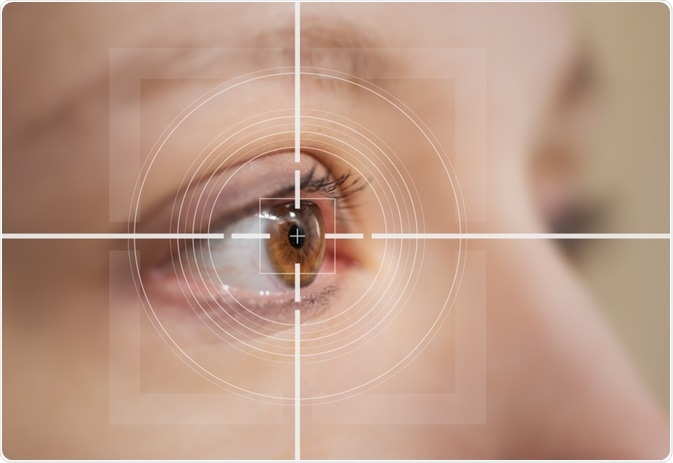Laser in situ keratomileusis (LASIK), commonly known as laser eye surgery, remains the most commonly performed surgical technique to correct refractive errors. It can be used for the correction of myopia, hyperopia and astigmatism by reshaping the cornea via an excimer laser. The efficacy and safety of this procedure is well-established in the medical literature.
But although the technology has a plethora of benefits, higher-order visual aberrations have plagued most refractive procedures. This is the term for visual problems that cannot be diagnosed with a traditional eye exam but may permanently affect the quality of vision. Higher-order aberrations include starbursts (glare), ghosting, halos, double vision and others.
 Image Credit: Rohane Hamilton / Shutterstock.com
Image Credit: Rohane Hamilton / Shutterstock.com
Higher-order aberrations
As already indicated, the quality of vision can be enduringly affected by visual aberrations following surgery. The main causes for the occurrence of the aforementioned higher-order aberrations are subclinical decentration (less than 1.0 mm) and wide-area laser ablation profiles.
When pupils dilate and result in a diameter that surpasses the optical treatment zone, rays of light refracted by the untreated peripheral cornea are not focused at the same position as the central rays. In turn, retinal blur circles occur, a phenomenon also known as negative clearance effect. Such symptoms are more pronounced after treating cylindrical errors due to the oval area of laser treatment with an inherently smaller optical zone in the steep meridian.
Furthermore, the correction of higher refractive errors is often linked with increased aberrations, since the ablated and intact cornea differ in their respective indices of refraction. The oblate shape of the cornea after LASIK represents a predominant factor in the functional vision decrease and higher-order aberrations.
Preoperative measurement with an infrared pupillometer or using a Rosenbaum near card scale is essential in the preoperative screening of suitable patients. If a pupil diameter is larger than 6mm, the patient should be informed of potential night vision disturbances after LASIK. Still, even those patients report improvement in halos and night glare several months after the surgery.
Certain corneal light scattering can be a result of interface debris, cells or irregular collagen deposition, but the distinction is often difficult to make. Thus development of software that will allow larger ablation diameter and measures to prevent decentration and central islands will aid in reducing most symptoms.
Mild miotics can be quite effective in managing those aberrations, and especially helpful in night driving. Topical dilute brimonidine, pilocarpine and tinted contact lenses with artificial pupils are two beneficial approaches to this problem. Adequate surface lubrication may be a relief, and large-diameter tetra-curved rigid gas-permeable contact lenses can be used for adequate visual recovery.
How does laser eye surgery work? - Dan Reinstein
Measurement of optical quality after LASIK
Objective assessment of optical quality after laser vision correction is hard, but necessary due to the possible emergence of higher refractive errors. The double-pass technique has been shown as one of the most accurate tools for that purpose. It records and analyzes images of a point source projected on the retina after retinal reflection and double-pass through the ocular media.
The only commercially available device based on the double-pass technique is the Optical Quality Analysis System II (OQAS II). It allows precise assessment of the effect of aberrations and the loss of ocular transparency by measuring several optical quality parameters such as Modulation Transfer Function (MTF), Objective Scatter Index (OSI) and Strehl ratio.
MTF evaluates the relationship between the contrast in the image formed by the system (i.e. a human eye) and the original contrast of the scene being observed. In cases of no contrast degradation, the contrast in the image would be the same as the contrast in the object. As contrast reduction is greater for high spatial frequencies, MTF represents a spatial frequency function.
OSI provides information on the relevant forward scatter affecting vision, and its higher index value represents a higher amount of intraocular scattering. The Strehl ratio is defined as the ratio of peak diffraction intensity pattern of an aberrated image to that at the peak of an aberration-free image.
References
Further Reading
Last Updated: Aug 23, 2022